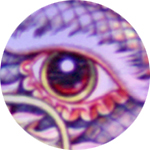ing shou gun
hay all, need some help with some research and thought that the forum would be the best place to come.
im looking for info on ing shou gun. any info would help me. iv studied the form for 4 years but still dont know that much about it. iv tried wiki, google and youtube but didnt get much info so here i am.
who made the form?
how old is it?
has it changed over the years?
is there a modern equivalent?
thanks guys. 
its not the destination that is important it is the journey getting there




 Reply With Quote
Reply With Quote








